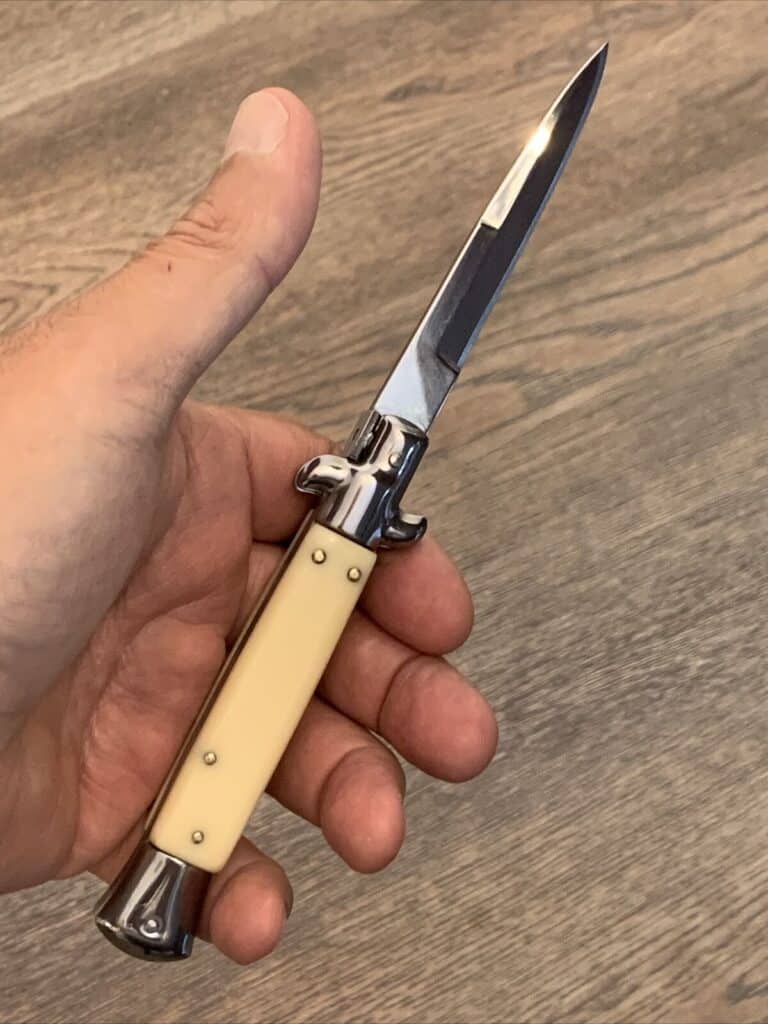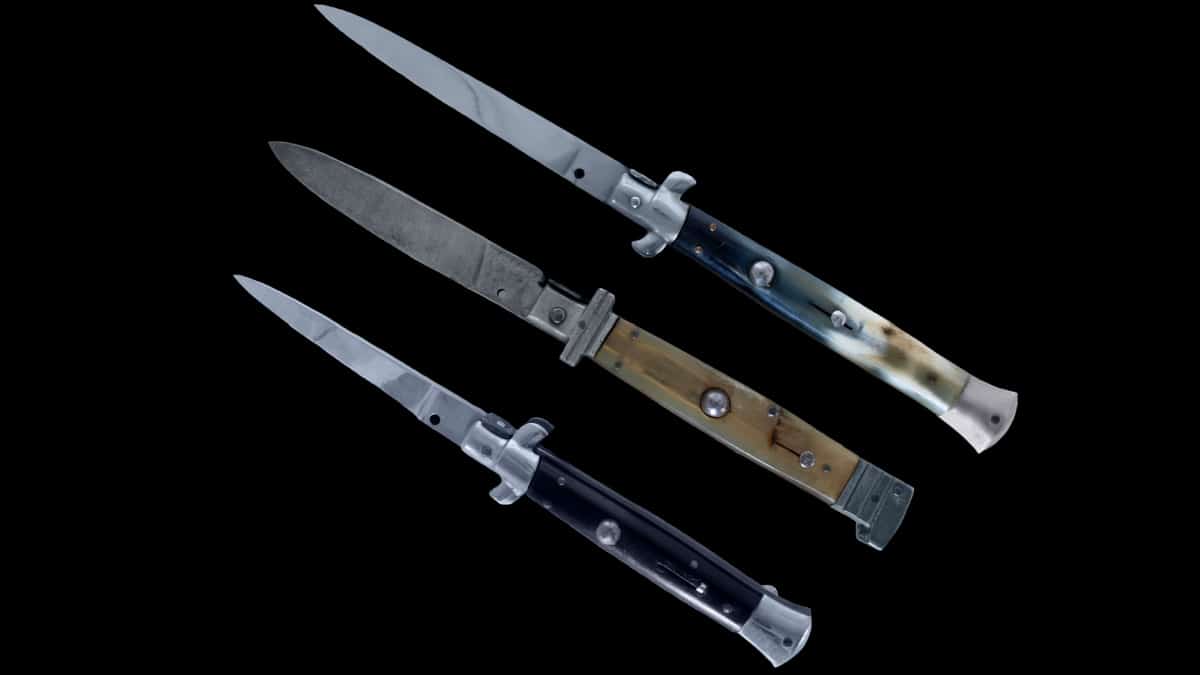As an Amazon Associate I earn from qualifying purchases.
When thinking of Italy, pizza and pasta may come to mind, but there’s another item to add to the list: Italian stilettos and switchblades. These two knives have a controversial history, having been linked to World Wars, and are currently restricted in many regions. However, their craftsmanship is impressive, and they have unique properties and historical significance. In this article, we’ll explore everything about these blades.
Stilettos & Switchblades – Background
Stiletto Knives

Stiletto knives have been around since the 15th century and were generally used as offensive weapons for stabbing due to their quiet operation. The term stiletto translates to “little steel” in Italian, and stilettos have a narrow structure meant to fit into the gaps of a knight’s armor. Many stiletto knives were used during the World Wars and had a significant place in the American market. Traditional stilettos were hammer-forged of a single metal and had no separate handles, but nowadays, they are designed with fun handles and are considered a product of ancient genius.
Features:
- Slender, fixed blade with a pointed, needle-like tip
- Narrow, triangular cross-section
- Lightweight and compact
Legality and Present Use: Stiletto knives were banned from the American market due to mass misuse by criminals and delinquents. Their rigid form and thrust-oriented use make them unsuitable for everyday use. Today, they are primarily used as self-defense tools in combat.
Switchblade Knives
Switchblades originated between the 18th and 19th centuries and quickly became popular among military and medical professionals. They are also called automatic, flick, or ejector knives and are excellent personal defense tools. However, their association with crimes has given them a negative attribute. Switchblades introduced various knife handles and were suitable for many functions that stilettos were incapable of.
Features:
- Foldable or sliding blades
- Shaped as drop-point, pen, or tanto
- Handles may feature switches, levers, springs, or buttons
- Multiple blades with a lock to prevent accidental closure
Legality and Present Use: The Anti-Switchblade Act was passed in 1958, banning the manufacture, sale, and use of switchblades. However, today, they are still used for hunting, butchering, skinning, or personal defense as pocketknives.
Differences between Stilettos and Switchblades
- Switchblades are foldable or sliding, while stilettos are fixed.
- Switchblades have sharp single or double edges, whereas stilettos primarily have a pointed tip with false double edges that can or cannot be sharpened.
- Switchblades have more functionality than stilettos.
Buying a Stiletto or Switchblade
When buying a stiletto or switchblade, consider grip and balance, blade material, and overall design. Additionally, research local laws and regulations before purchasing.
How To Purchase A High-Quality Stiletto Or Switchblade
If you’re in the market for a stiletto or switchblade, there are a few key factors to consider to ensure you’re getting a good quality product.
First and foremost, it’s important to make sure the knife is legal in your area.
Laws surrounding the purchase and ownership of knives can vary depending on your location, so it’s essential to do your research beforehand.
Once you’ve confirmed that you can legally purchase a stiletto or switchblade, the next step is to consider the blade. Look for a blade made from high-quality steel, as this will ensure it maintains its sharp edge for longer periods of time. Additionally, a well-made blade will be less likely to chip or break during use.
Next, consider the handle. A sturdy, comfortable handle is crucial for a good grip and overall control of the knife. Handles made from materials such as bone, wood, or plastic can all be good options, but make sure the handle is securely attached to the blade and doesn’t wobble or shift.
Finally, take into account the size and weight of the knife. Depending on your intended use, a larger, heavier knife may be more appropriate. However, for everyday carry, a smaller, lightweight knife may be easier to handle and less cumbersome.
When purchasing a stiletto or switchblade, it’s important to do your due diligence and make sure you’re getting a quality product. By considering the blade, handle, size, and weight of the knife, you’ll be able to find the perfect option for your needs.
Do Sheepsfoot Blades Have A Purpose? (Cuz They’re Ugly…)
Spetsnaz Machetes – Blades Of The Russian Special Forces
What Is The Actual Purpose Of A Spear Point Knife Blade?
CRKT CEO Review – Coolest, Most Worthless Knife Ever?
How Sharp Is A Scalpel? (Is It Sharper Than A Razor?)
Can You Shave With A Knife? (Yes, Here’s How)
As an Amazon Associate I earn from qualifying purchases.







